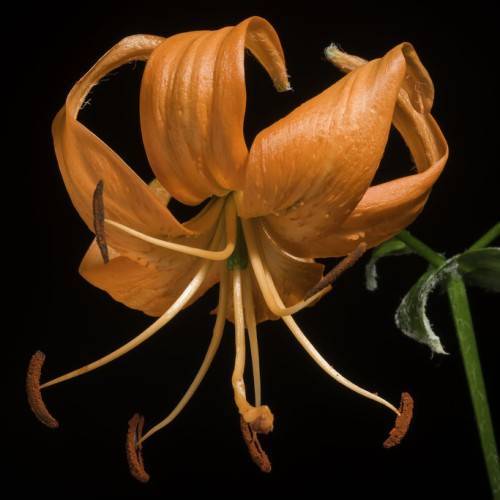
tiger lily
Lilium lancifolium
Cycle:
Herbaceous Perennial
Watering:
Average
Hardiness Zone:
4
Flowers:
Flowers In Summer
Sun:
Filtered shade, Full sun only if soil kept moist, Part sun/part shade
Soil:
Humus rich
Fruits:
Fruits In Autumn Ready In
Leaf:
Yes
Growth Rate:
High
Maintenance:
Low
Drought Tolerant:
Yes
Salt Tolerant:
Yes
Care Level:
Medium
watering
Ligularia (Ligularia Stenocephala) likes moist, constantly damp soil, and should be watered deeply and regularly. Water when the top inch (2.5cm) of soil has dried out. If planted in partial sun, water twice a week, and if planted in full sun, water up to 3 times a week. It is important to keep the soil damp but not waterlogged, as this can lead to root rot, so check the soil before watering. In the winter, watering can be reduced as the plant is dormant; it should only receive enough water to prevent the roots from drying out completely. Watering during the summer should be heavier because of the hot winds and bright sunshine.
sunlight
Ligularia stenocephala needs an abundance of sunlight and should be placed in a sunny spot with partial shade in the afternoon. This plant species does best in full sun but can tolerate partial shade, so it is best to place it in a location with at least some shade during the hottest part of the day. The most optimal growing hours of sunlight for this plant species will be between 8-10 hours of direct sunlight per day during the summer months.
pruning
Ligularia (Ligularia stenocephala) should be pruned in early spring before new growth occurs. The plant will start to grow again in late May or early June. Prune the dead and damaged leaves to encourage new growth, and trim back leggy stems as needed. This will ensure that the plant remains tidy and will encourage new growth. The amount of pruning will vary depending on the age of the plant, overall size, and the desired shape. However, it is important to keep in mind that ligularia is a quick grower and over-pruning can lead to more work later on.
